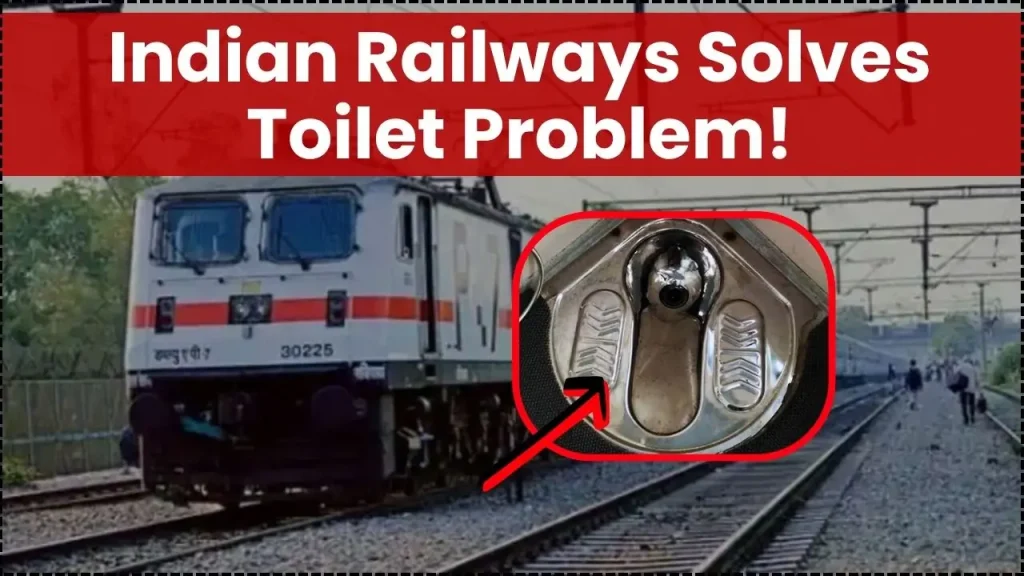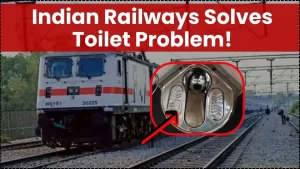If you’ve ever stepped into a train washroom mid-journey and wished for a miracle, the Indian Railways toilet rule might be the breakthrough you were waiting for. The national transporter is rolling out rapid “quick-clean” squads positioned every few stations, paired with new mechanised tools that slash cleaning time to well under a minute per toilet. The outcome is simple but powerful: fresher washrooms throughout long journeys, fewer choke-and-odour complaints, and a smoother experience for everyone on board.

The Indian Railways toilet rule is the new hygiene playbook for long-distance trains: speed up cleaning cycles, cut turnaround time per washroom, and place trained squads after every three to four stations so mid-journey cleanliness doesn’t fall off a cliff. It’s backed by leadership-level monitoring, better tools like backpack jet sprayers and battery-powered vacuums, and system-wide use of bio-toilets in passenger-carrying coaches. In parallel, major stations are adding well-maintained toilet blocks to reduce pressure on onboard facilities and give passengers cleaner options during halts. The focus is outcomes, not announcements cleaner washrooms, more often, with accountability built in.
Indian Railways Solves Toilet Problem
| Item | Key Details |
|---|---|
| Core Move | Rapid “quick-clean” teams after every 3–4 stations to refresh toilets mid-journey |
| Time Target | Sub‑one‑minute per toilet using mechanised tools and streamlined workflows |
| Oversight | Real-time monitoring with swift escalation to top leadership when standards dip |
| Technology | Backpack high-pressure jets, battery vacuums, ergonomic brushes, absorbent mops |
| Bio-Toilet Coverage | All passenger-carrying mainline coaches provisioned with bio-toilets |
| Station Upgrades | New, free, and maintained toilet blocks at key hubs to ease onboard load |
| Audit Response | Systemic fixes to tackle choked toilets, water shortages, and low satisfaction |
| Rollout Model | Clean Train Station revamp with 10-minute crew benchmarks at select nodes |
This is a smart, execution-first answer to a problem that affects millions every day. By shrinking cleaning time to seconds, placing teams strategically, standardising bio-toilets, and adding station capacity, the Indian Railways toilet rule turns hygiene from a once-a-journey event into an ongoing service. Expect cleaner washrooms, quicker fixes, and a noticeably better travel experience without slowing down the trains that keep India moving.
What Exactly Changes on Trains
The biggest change is operational: cleaning doesn’t wait for terminals anymore. With quick-clean units stationed roughly every three to four stops, teams hop in during short halts and refresh multiple toilets swiftly. The workflow is tightly scripted—one cleaner handles bowls and walls with high-pressure jets; another vacuums and mops, empties bins, and wipes basins. With sub‑one‑minute cycles per toilet, trains can keep moving on schedule and still deliver consistently clean washrooms through the day.
Why The Rule Was Needed
Complaints about choked washrooms, foul smells, wet floors, and water shortages were far too common, especially on long-haul trains. Traditional cleaning windows limited to longer halts or endpoints couldn’t keep up with real-world usage. By shrinking cleaning time and deploying teams at frequent intervals, Railways finally aligns hygiene standards with actual passenger flow. It’s not just about optics; it directly improves comfort, dignity, and safety for families, senior citizens, and women travelers.
The Bio-Toilet Backbone
This rule sits on top of a crucial infrastructure shift: bio-toilets are now standard across passenger-carrying mainline coaches. The DRDO-enabled bio-digester design breaks down waste biologically, reduces odour at the source, and eliminates track discharge. When combined with fast, mechanised cleaning and more frequent interventions, bio-toilets help keep interiors fresher for longer and significantly cut corrosion and mess on the network.
Station-Side Relief to Ease Pressure
Major interchange nodes like Thane and Kalyan are adding new, well-maintained toilet blocks with no user fees. Dedicated staff, better layouts, and reliable upkeep create a station-side safety valve, letting passengers use clean facilities before boarding, during longer halts, or between connections. This reduces queues inside coaches and keeps onboard washrooms from getting overwhelmed during peak times.
How The Indian Railways Toilet Rule Improves Your Journey
- Cleaner, more often: Expect multiple refresh cycles during a single long journey, not just at origins and destinations.
- No timetable shock: Mechanised tools compress per-toilet time to under a minute, so cleaning fits inside routine halts.
- Faster fixes: If a washroom needs attention in-transit, staff can trigger intervention by the next stop under the monitoring framework.

Tips To Make the Most of Cleaner Facilities
- Use station blocks when available at busy hubs; they’re free, staffed, and designed to ease onboard pressure.
- Don’t dispose of non-biodegradable items in coach toilets; it clogs bio-digesters and undermines cleanliness for everyone.
- If you notice water shortage or a choke, inform onboard staff or use official feedback channels so mid-journey teams can act quickly.
Enforcement, Accountability, And Awareness
The plan isn’t just about faster mops and better machines. It’s built on escalation pathways that reach senior leadership, ensuring slippages get attention and orders on the spot. Contracted teams are being measured against tighter benchmarks, from the number of toilets serviced to time spent and equipment usage. Passenger awareness campaigns run alongside to prevent misuse of bio-toilets because technology performs best when users understand how to keep it working.
What To Watch Next
- Scale and training: Sub‑one‑minute cycles depend on widespread equipment deployment and well-drilled crews across zones.
- Peak readiness: Festival seasons and surge periods will test whether the new frequency and workflows hold under pressure.
- Feedback loops: Continued audit-style checks and monitoring groups will be key to sustaining standards over time.
FAQs on Indian Railways Solves Toilet Problem
Q1: What is the Indian Railways toilet rule in simple terms?
It’s a mid-journey cleanliness system that places rapid cleaning squads every few stations, uses mechanised tools to refresh each toilet in under a minute, and keeps washrooms consistently usable without delaying trains.
Q2: Does this apply to all long-distance trains?
That’s the goal. The model is being scaled across corridors, so long-distance trains receive mid-route cleaning at regular intervals, not just at endpoints or longer halts.
Q3: How do bio-toilets improve cleanliness?
Bio-toilets use a bacterial digestion process to break down waste, reducing odour and eliminating direct discharge on tracks. When paired with faster cleaning cycles, they help maintain a cleaner, safer environment inside coaches.
Q4: Will station toilets also improve?
Yes. Key stations are adding free, well-maintained toilet blocks with dedicated staff. These facilities reduce queueing onboard and support cleaner journeys during busy boarding and transfer periods.
















